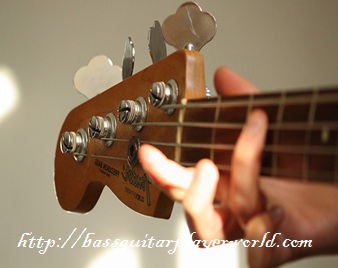Experimenting With Chord Substitution in Blues Music
 Blues playing is a traditional style. That being said, there isn’t much room for deviation when it comes to jamming and playing the basic progressions.
Blues playing is a traditional style. That being said, there isn’t much room for deviation when it comes to jamming and playing the basic progressions.
If, however, in your own free time you wish to experiment a bit with substituting chords, we can give you a few tips.
In this article, we will discuss some possible basic chord substitutions for use within a bass guitar’s twelve bar blues progression.
Keep in mind, as we said, the blues is a very traditional style. This means that if you are playing with other musicians, they won’t look kindly upon you changing up the progressions that they know so well.
In most cases, if you want to substitute chords, you’ll have to do it in your spare time and play alone. In the blues, the bass player’s job is to keep the progressions rhythm flowing. This means the other instruments, the lead instruments, will be looking at you for consistency, not experimentation.
Keep this in mind as it will have an enormous impact on your playing, and teaching yourself to substitute chords can create a habit.
Creating an unattractive habit is a sure way to find yourself jamming alone. If you have confidence in your ability to structure your playing when necessary and to separate your playing between personal and interactive, then by all means this can be a fun tool to learn. If not, it is best that you simply skip learning chord substitutions as they will only wind up confusing you, and worse, confusing the musicians you play with.
Let’s Start With a Recap on Theory
The basic C Major twelve bar blues progression follows a I, IV, V pattern. One of the most common twelve bar blues patterns is this progression:
C C C C F F C C G G C C
If we were to break this progression down into its scale degrees, it would look like this:
I I I I IV IV I I V V I I
This progression builds up to the fifth scale degree, or the dominant, slowly, allowing the progression to achieve an overall relaxed feel. This is an extremely popular technique in blues playing, as it allows musicians to approach the progression at a leisurely pace and lets them improvise much more casually.
Which Chord Can You Replace?
To substitute one of these chords, we would need to look at the chord properties. Our tonic triad consists of the notes C, E, and G. Our subdominant triad consists of the notes F, A, and C. Our dominant triad consists of the notes G, B, and D. To substitute any of these chords, we would have to take a look at C Major and find a chord with similar properties.
A chord similar to our subdominant is our submediant. This triad consist of the notes A, C, and E. It covers two thirds of your subdominant, which means we could substitute it for our fourth chord without too much of a change.
The only way to get better at substituting is to practice. Try studying your scales and find similarities between chords. Once you do, you can use the similar chords as substitutions for one another.
All The Best Bass Playing Resources At One Place!
Get bite-sized video lessons covering a range of bass guitar techniques and playing styles at JamPlay. For a few pennies a day, you gain full access to a huge library of professionally recorded lessons. Jamplay is everything that a bass player would need to improve their skills in the shortest possible timeframe. Check them out today!
Related Articles
Comments are closed.





